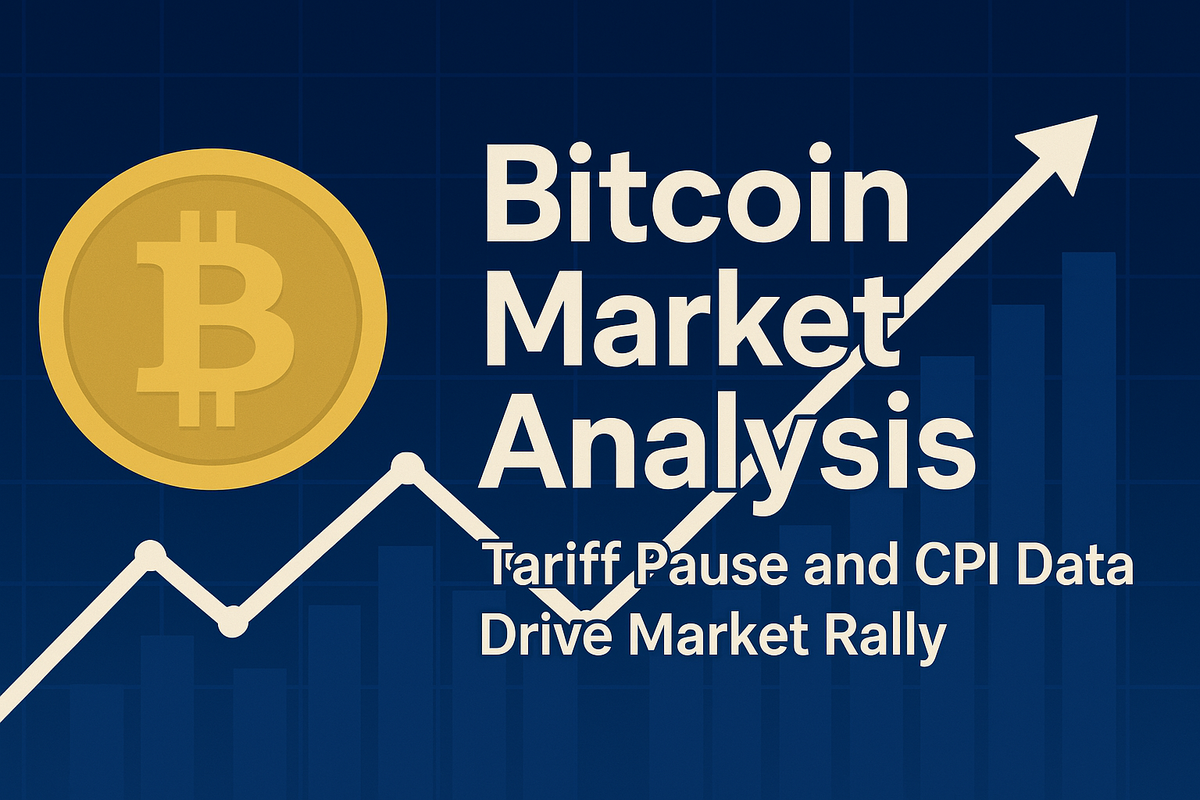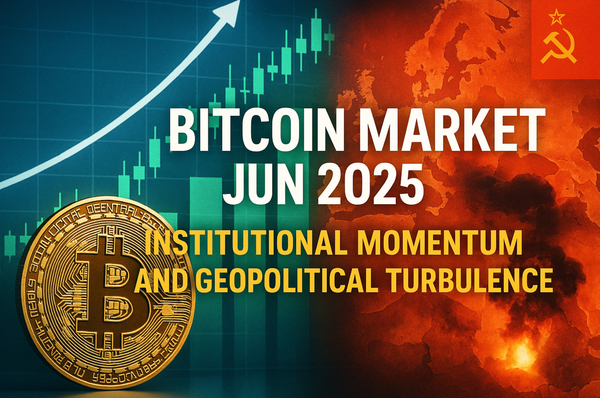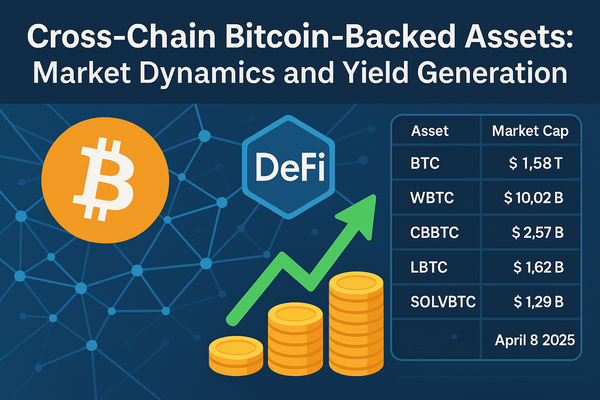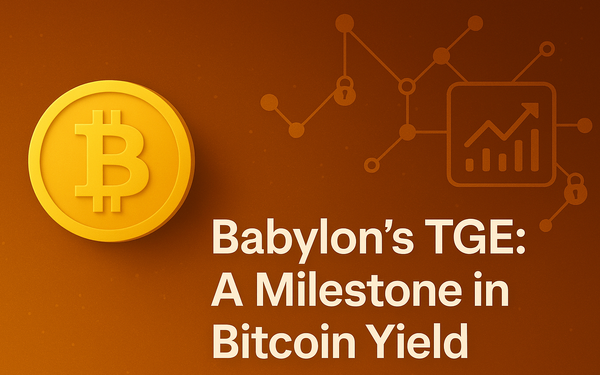Bitcoin Market Analysis: Tariff Pause and CPI Data Drive Market Rally - April 10 2025

Bitcoin (BTC) has surged above $82,000 following two significant developments: President Trump's announcement of a 90-day pause on most reciprocal tariffs on April 9, and the release of lower-than-expected U.S. inflation data on April 10. The Consumer Price Index (CPI) came in at 2.4% for March 2025, down from 2.8% in February, marking the lowest inflation rate in six months.
This dual catalyst scenario has triggered a broad cryptocurrency rally, with Ethereum, XRP, and Solana posting double-digit gains. The relief in crypto markets mirrors traditional finance, where the S&P 500 recorded its strongest performance since 2008.
Key Catalysts Explained
Tariff Policy Shift
President Trump's policy announcement via Truth Social introduced a 90-day pause on most international tariffs, with a notable exception for China, where tariffs were actually increased to 125%. This partial de-escalation relieved immediate trade war concerns that had previously driven Bitcoin down 10% from recent highs.
Inflation Cooling
The 2.4% CPI reading surprised analysts who had anticipated 2.6%, while core CPI (excluding food and energy) reached 2.8%—its lowest level in nearly four years. This cooling inflation reduces pressure on the Federal Reserve to maintain aggressive monetary policy, creating a more favorable environment for risk assets like cryptocurrencies.
Technical Analysis
Bitcoin currently sits at a critical juncture:
- Current price: $82,400
- Key resistance: $83,500 (aligning with 61.8% Fibonacci retracement)
- Primary support: $77,000
- Secondary support: $74,000 (recently tested)
Trading volume spiked 40% above the 10-day average during the rally, indicating strong buyer interest. The Relative Strength Index (RSI) sits at 58, up from an oversold 32 earlier this week, suggesting room for further upside before reaching overbought territory.
A sustained break above $83,500 could open a path toward $88,800 (the 100-day moving average), while failure to hold above $80,000 risks a retest of lower support levels.
Market Scenarios
Bullish Case (40% Probability): $88,000-$100,000+
For Bitcoin to reach new heights, several conditions must align:
- Decisive break above $83,500 with strong volume
- Inflation remaining below 2.6%
- Federal Reserve signaling no rate hikes in May
- Extension of the tariff pause beyond the initial 90 days
Under these circumstances, institutional and retail FOMO could drive prices toward previous all-time highs, potentially testing $100,000 if Arthur Hayes' "stealth QE" thesis materializes amid trade-driven economic shifts.
Consolidation Case (45% Probability): $77,000-$83,500
The most likely scenario given current conditions:
- Bitcoin struggles to break $83,500
- CPI moderately increases to 2.6-2.8%
- Ongoing uncertainty around tariff policy
- Fed maintains data-dependent approach
In this scenario, Bitcoin would trade sideways within the established range as market participants await greater clarity on monetary policy and trade developments.
Bearish Case (15% Probability): $65,000-$74,000
This downside scenario could unfold if:
- Inflation rebounds above 3% due to tariff effects
- Fed signals rate hikes in response
- Bitcoin drops below $77,000 support
- Global growth indicators deteriorate
In this case, Bitcoin's high correlation with tech stocks (currently 0.65 with NASDAQ) could trigger a broader sell-off, with $65,000 serving as a deeper support level.
Macro Implications
The interplay between tariffs and inflation creates a complex backdrop. While the current CPI reading provides the Fed with flexibility, economists at EY-Parthenon project that tariffs—particularly the 125% on Chinese goods—could add 0.8 percentage points to inflation by year-end, potentially reversing the current cooling trend.
This dynamic places Bitcoin in an interesting position. As a risk asset, it benefits from monetary easing, but as a potential inflation hedge, it also attracts investors concerned about tariff-driven price increases. This dual narrative contributes to its volatility but also underscores its evolving role in portfolios.
Expert Perspectives
Market analysts offer mixed outlooks:
- Zaheer Ebtikar (Split Capital): "Bitcoin traded like a risk asset during this period, with investors willing to take on more risk as uncertainty subsided."
- Edward Chin (Parataxis): Notes the market was "oversold" prior to these catalysts, with negative funding rates setting the stage for upward movement.
- Ben Kurland (DYOR): Calls the tariff pause a "strategic breather" providing temporary stability without eliminating underlying volatility.
- Markus Thielen (10x Research): Sees Bitcoin's recovery contingent on both tariff flexibility and Fed policy direction.
Conclusion
Bitcoin's surge past $82,000 represents a market recalibrating to improved macroeconomic conditions, but significant hurdles remain. The $83,500 resistance level will be crucial in determining near-term direction, with the consolidation scenario ($77,000-$83,500) most probable over the coming month.
Long-term prospects remain tied to inflation trends, trade policy developments, and the Fed's response. While institutional adoption continues to strengthen Bitcoin's foundation, as evidenced by BlackRock's IBIT ETF reaching $30 billion in assets under management, the interplay of these macro factors will ultimately dictate whether the current rally extends into a sustainable bull run or fades into a prolonged consolidation.
Investors should watch upcoming economic indicators and any shifts in tariff policy, particularly China's response to the 125% tariffs, which could generate additional market volatility in the coming weeks.



